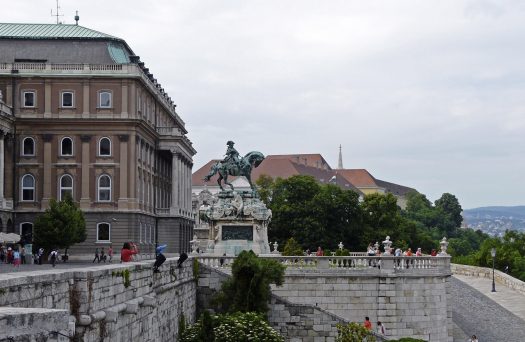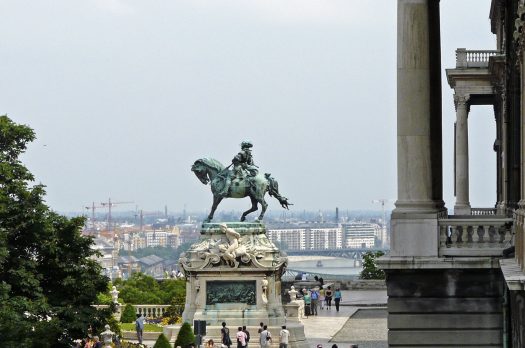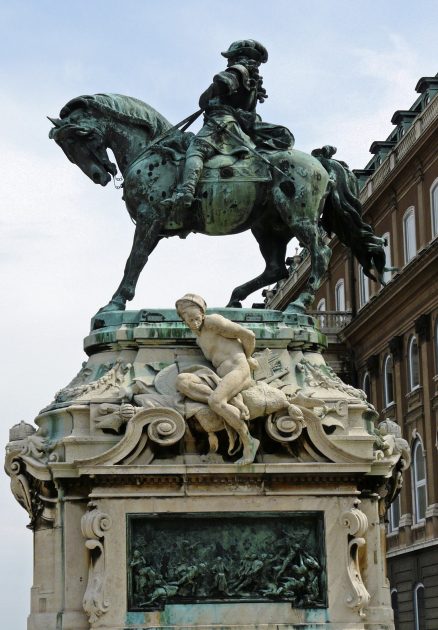- CountryHungary
- Town:Budapest
-
Year of creation:1900
- Rider(s):Savoy, Eugene of
(1663–1736), one of the most successful military commanders in modern European history, rose to the highest offices of state at the imperial court in Vienna. Born in Paris to aristocratic Italian parents, Eugene grew up around the French court of King Louis XIV, who rejected him for service in the French army. Eugene moved to Austria and transferred his loyalty to the Habsburg Monarchy. He secured his European-wide fame with a decisive victory against the Ottomans at the Battle of Zenta in 1697. Not only did he break the westward thrust of the Ottomans, liberating central Europe after a century and a half of Turkish occupation, but he also helped to save the Habsburg Empire from French conquest.
- Sculptor(s):Róna, József
(1861 –1939) was a Hungarian sculptor and artist.
-
This equestrian statue of Prince Eugene of Savoy in Buda Castle, standing on the Danube terrace, in a prominent position, high above Budapest was the major sculptural work of József Róna. The Neo-Baroque statue was made for the town of Zenta but this town could not afford its price. The monument was bought in 1900 by the master-builder of the Royal Castle, Alajos Hauszmann as a temporary solution until the planned equestrian statue of King Franz Joseph would be completed. This never happened so Prince Eugen remained on his plinth.












